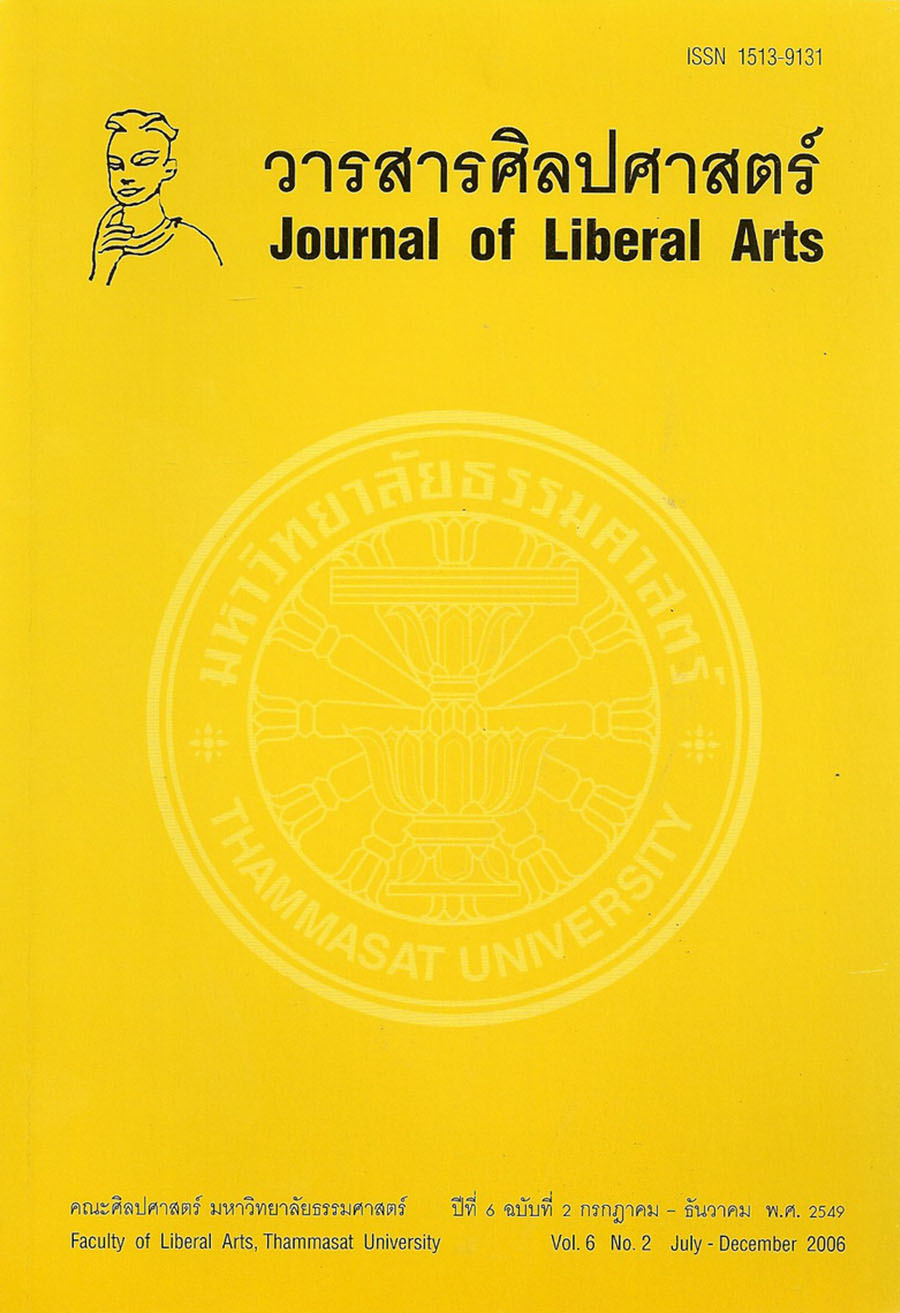กลวิธีสื่ออารมณ์ขันในละครตลกสถานการณ์ของไทยจากมุมมองวัจนปฏิบัติศาสตร์
Main Article Content
บทคัดย่อ
การวิจัยครั้งนี้มีวัตถุประสงค์เพื่อศึกษากลวิธีการใช้ภาษาและเจตนาในการสื่ออารมณ์ขัน ซึ่งอาศัยแนวคิดเกี่ยวกับการจำแนกวัจนกรรม หลักความร่วมมือ และความหมายบ่งชี้เป็นนัย เป็นพื้นฐานในการวิเคราะห์ ข้อมูลที่ใช้ในการศึกษานำมาจากบทสนทนาในละครตลกสถานการณ์ของไทยที่แพร่ภาพทางสื่อโทรทัศน์จำนวน 5 เรื่อง ผลการศึกษาในมุมมองเรื่องการจำแนกวัจนกรรม พบว่าวัจนกรรมที่ใช้เรียกเสียงหัวเราะแบ่งออกเป็น 6 วัจนกรรมกว้าง ๆ ได้แก่ วัจนกรรมโอ้อวด วัจนกรรมดูถูก วัจนกรรมข่มขู่ วัจนกรรมตำหนิ วัจนกรรมเย้าแหย่ และวัจนกรรมเสียดสี การใช้วัจนกรรมเหล่านี้สะท้อนให้เห็นว่าการสื่ออารมณ์ขันในละครตลกสถานการณ์ของไทยมักเกี่ยวข้องกับความก้าวร้าวและความมีอำนาจของผู้พูดที่มีเหนือกว่าบุคคลอื่น ส่วนการศึกษาในมุมมองของหลักความร่วมมือ พบว่าผู้สื่ออารมณ์ขันไม่ปฏิบัติตามหลักความร่วมมือ 2 ลักษณะ ได้แก่ การกระทำผิดต่อคติ และการฝ่าฝืนคติ ในที่นี้การกระทำผิดต่อคติมักก่อให้เกิดความหมายบ่งชี้เป็นนัยสนทนาที่สามารถสื่อความตลกได้ ส่วนการฝ่าฝืนคติอาจก่อให้เกิดความหมายบ่งชี้เป็นนัยสนทนาได้เช่นเดียวกัน แต่การสื่ออารมณ์ขันชนิดนี้มีเอกลักษณ์ที่เป็นการแสดงความจงใจกล่าวเท็จหรือกล่าวลวงเพื่อให้ผู้ฟังเข้าใจผิด เมื่อผู้สื่ออารมณ์ขันเห็นว่าผู้ฟังเข้าใจผิดแล้ว จึงจะเปิดเผย “เจตนาที่แท้จริง” ในภายหลัง ณ จุดนี้เองที่ทำให้เกิดเสียงหัวเราะขึ้น นอกจากนี้ ผู้วิจัยยังพบว่าความหมายบ่งชี้เป็นนัยแบบแผนสามารถสื่ออารมณ์ขันได้เช่นกัน
The main purpose of this research is to investigate the ways in which humor is expressed, taking into account linguistic strategies used and how people’s intentions in doing so are implicatures are the theoretical frameworks adopted in this research. The data were collected from five Thai situation comedies. From a speech-act theoretical perspective, the findings demonstrate that there are six broad categories of humor-related speech acts: boasting, expressing condescension, threatening, blaming, teasing and satire. These strategies, on the whole, indicate that humor in Thai situation comedies is closely associated with a feeling of aggression and superiority created by the speaker. The study further shows that humor can be conveyed by non-observance of the cooperative principle in two ways: flouting a maxim and violating a maxim. In the first case, the maxim was found to have been flouted and revealed instances of conversational implicatures. In the second case also, conversational implicatures were generated, but as a result of maxim violation. What is peculiar to the findings of the present study is that humor can be brought about by a speaker intentionally telling a lie in order to confuse the hearer or audience. When the speaker later reveals that he/she him/herself is held responsible for a maxim violation, laughter and thus humor ensue. Apart from this, examples of humor-laden conventional implicatures were also found.


